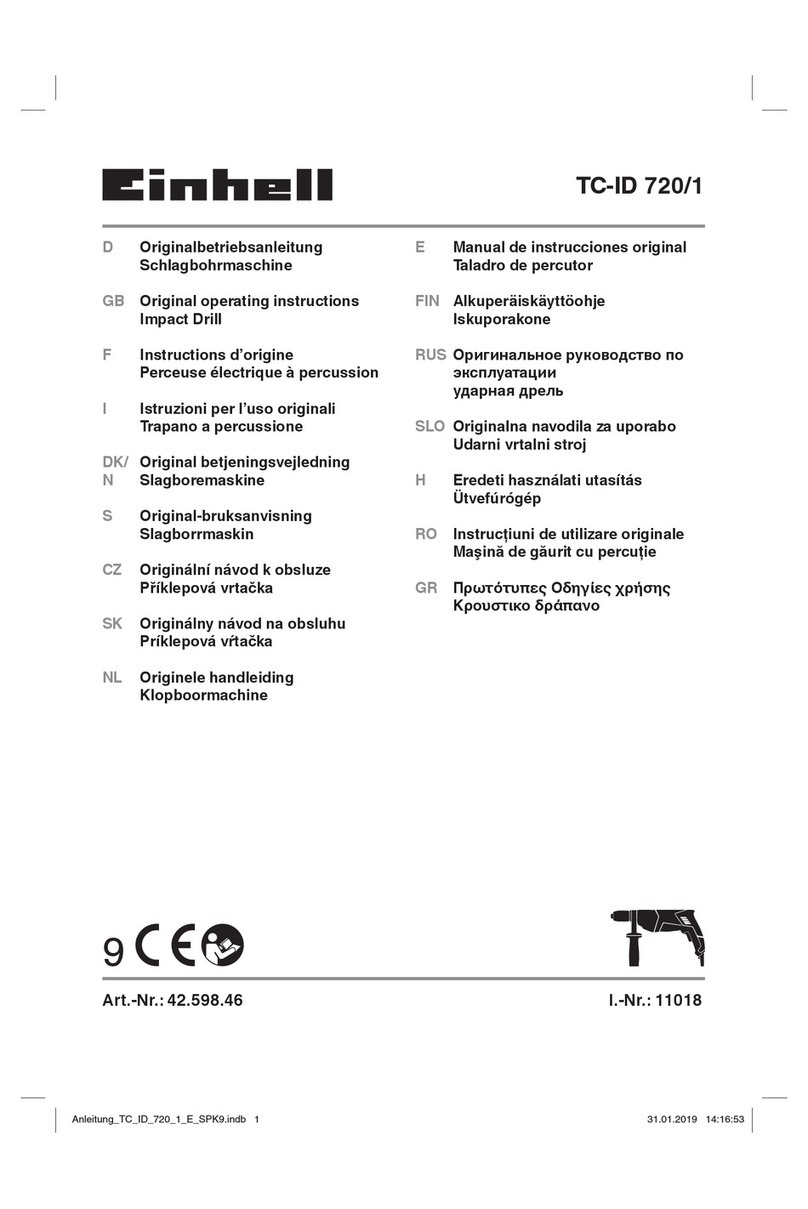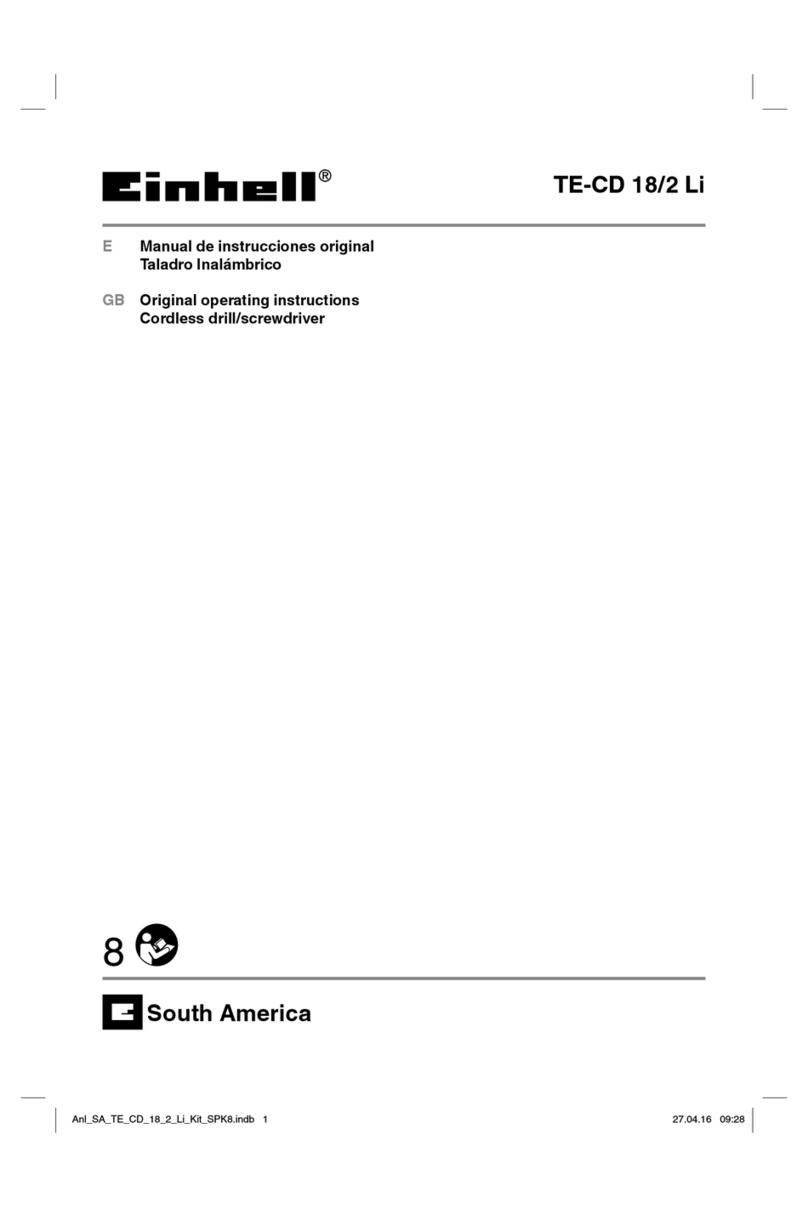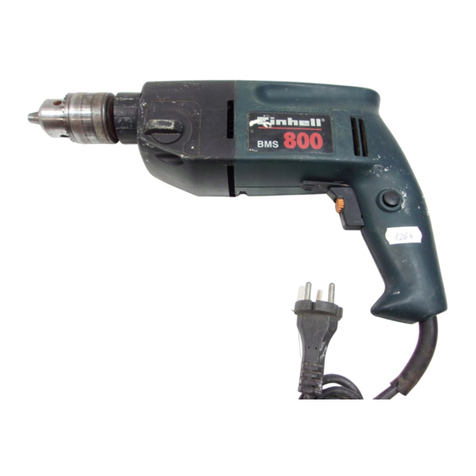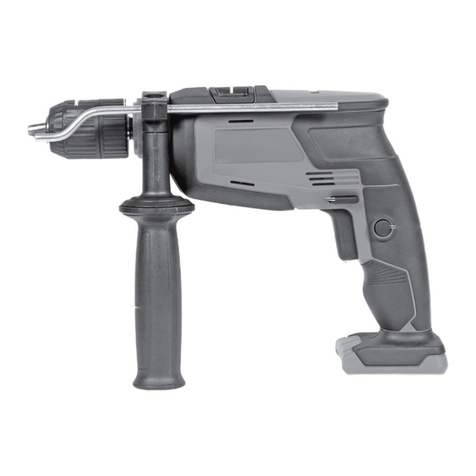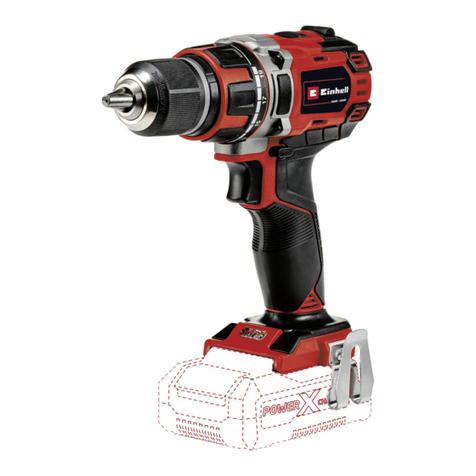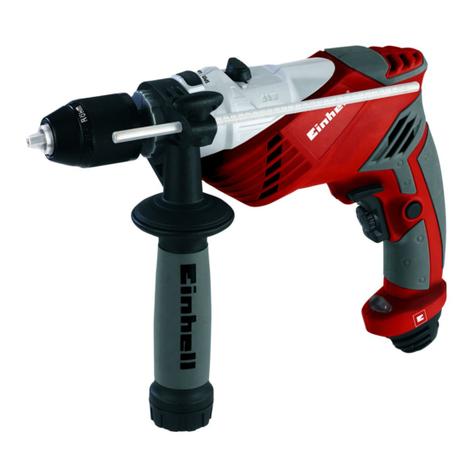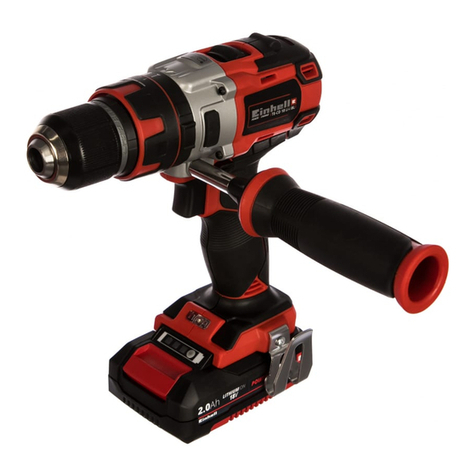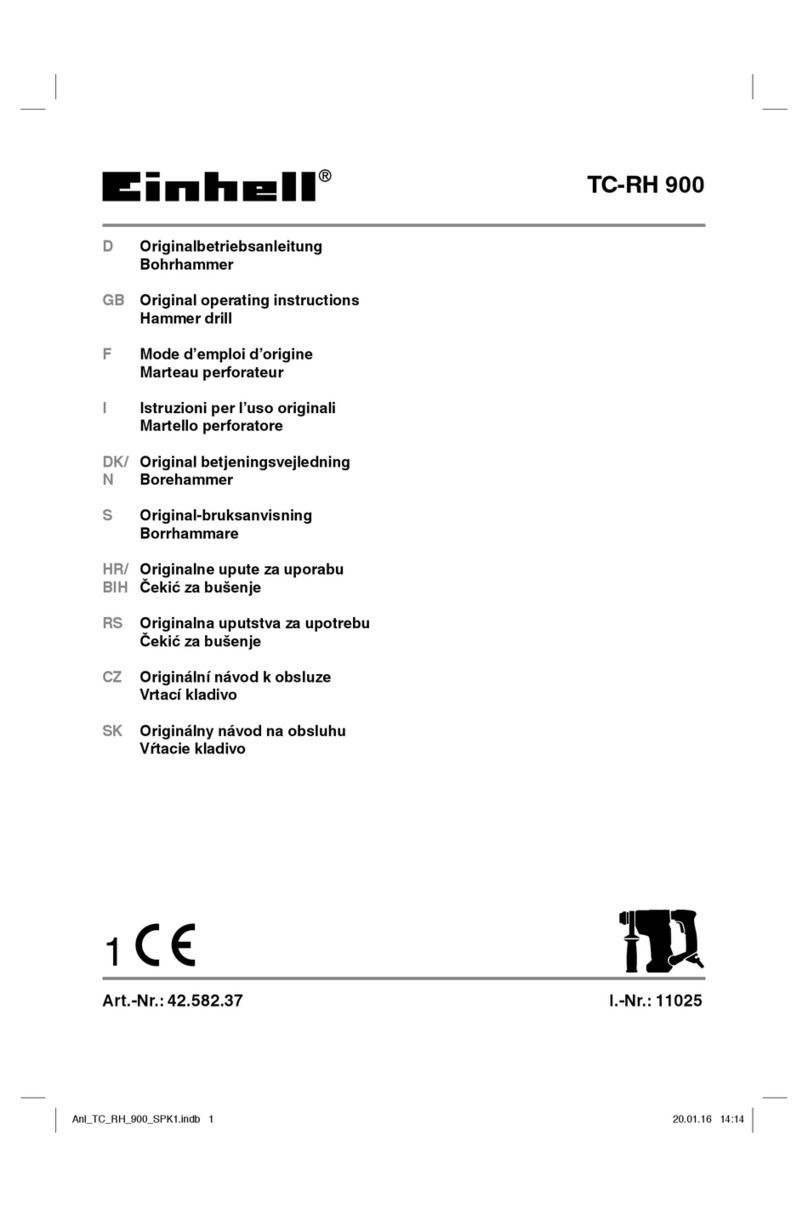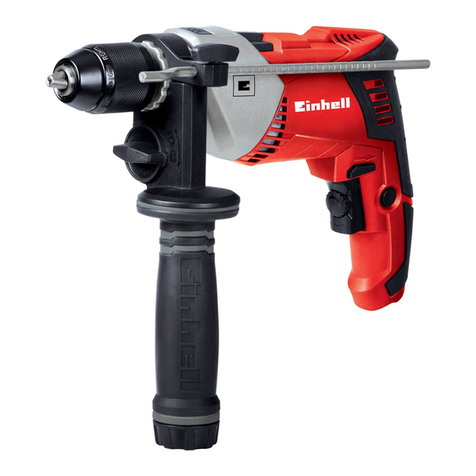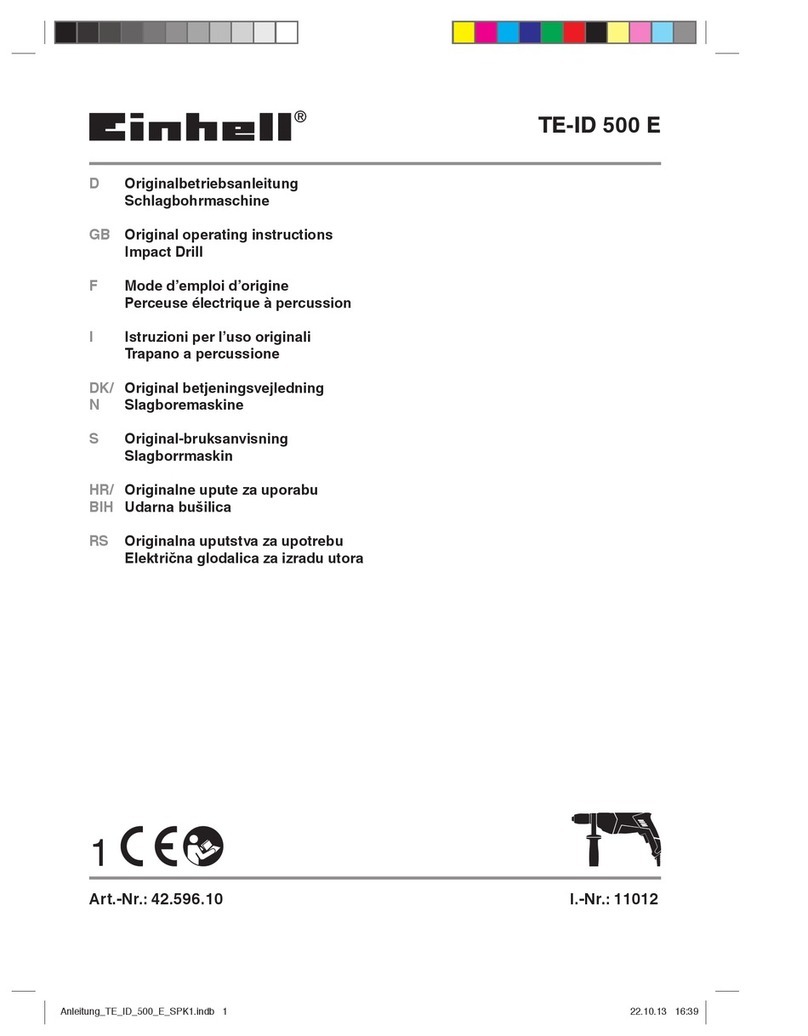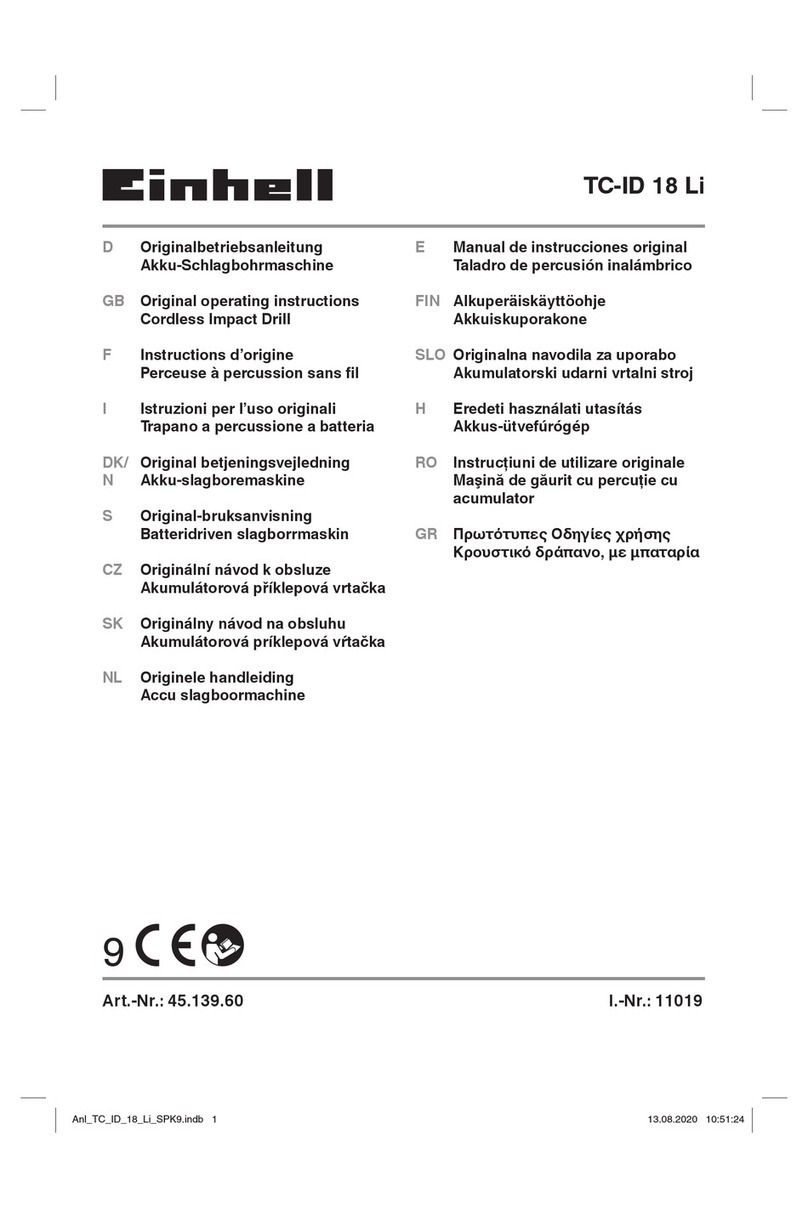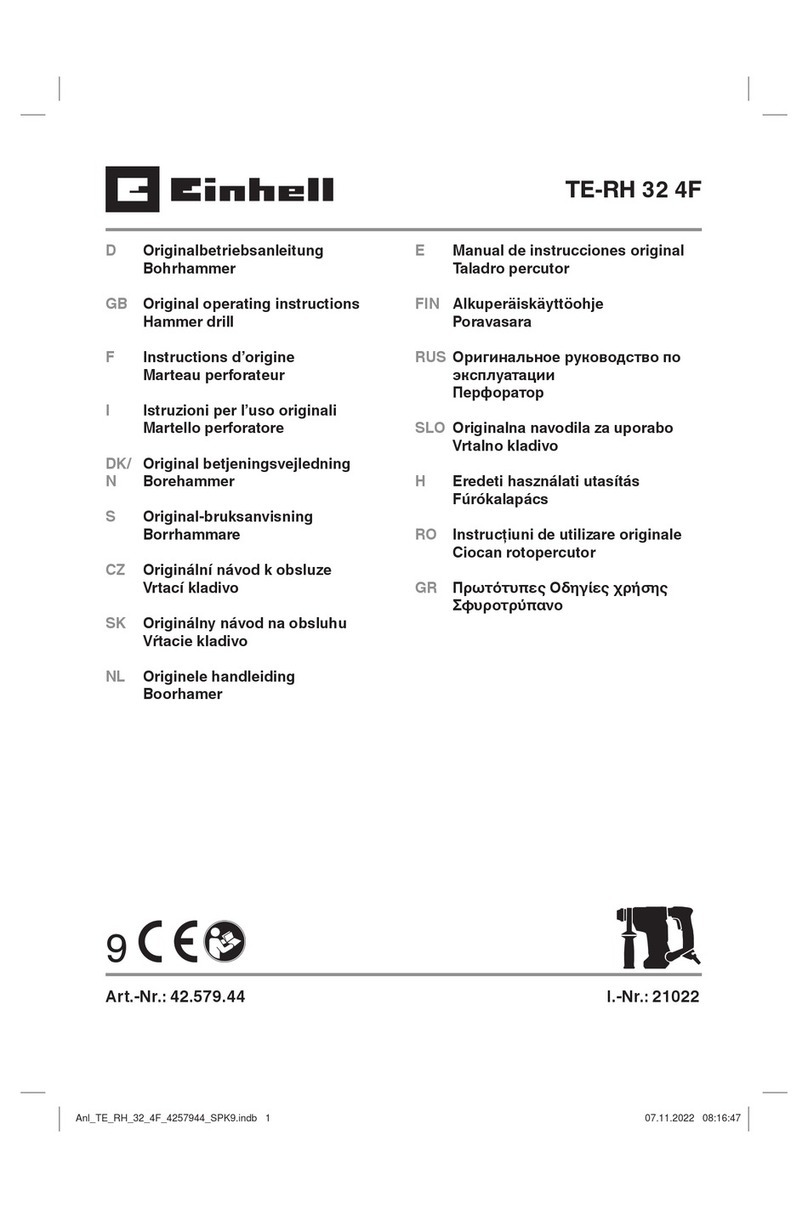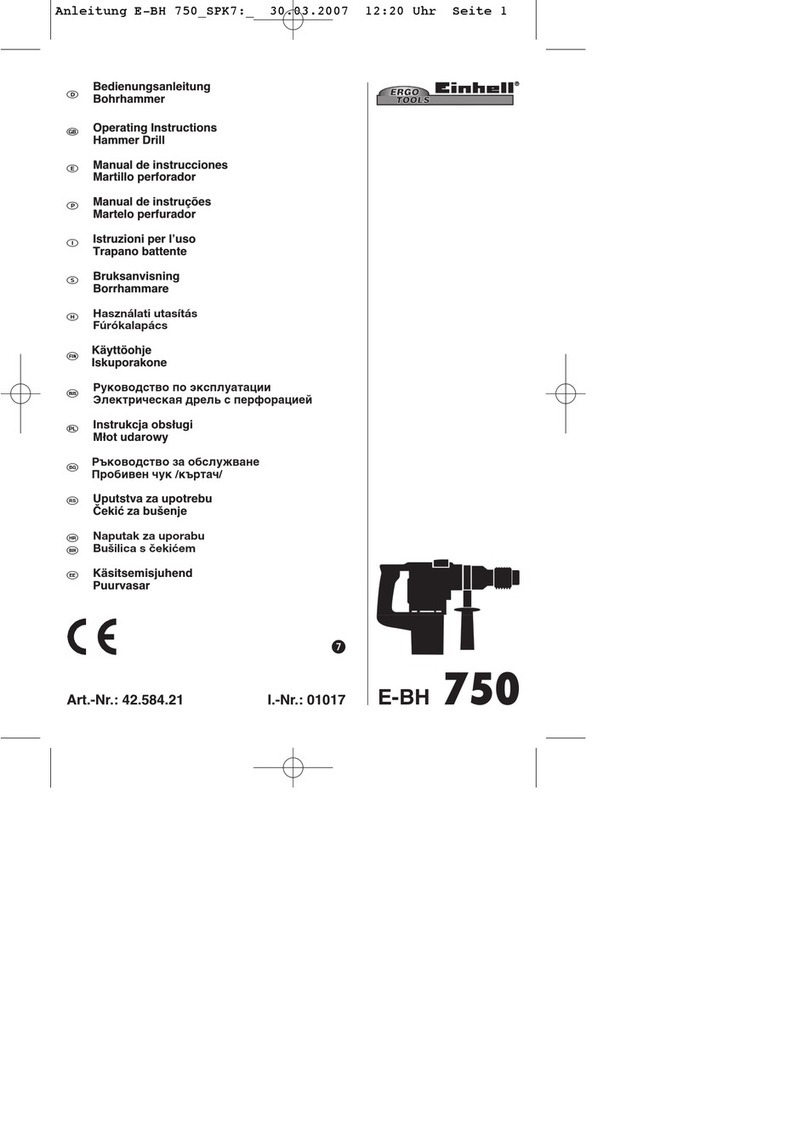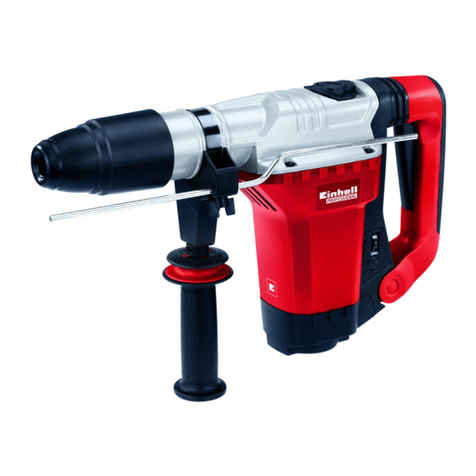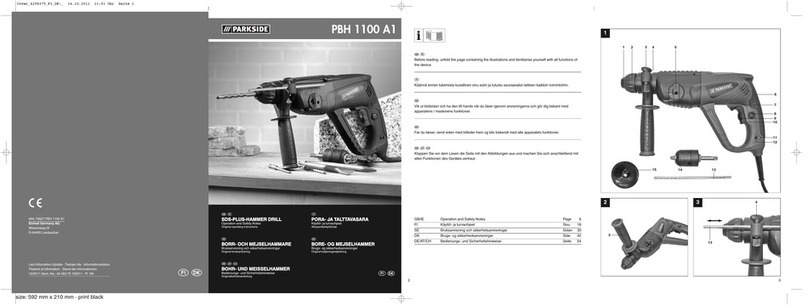GB
Important!
The vibration value changes according to the area of
application of the electric tool and may exceed the
specified value in exceptional circumstances.
5. Before starting the equipment
Before you connect the equipment to the mains
supply make sure that the data on the rating plate
are identical to the mains data.
Always pull the power plug before making
adjustments to the equipment.
5.1. Fitting the additional handle (Fig. 2-3/Item 8)
The additional handle (8) enables you to achieve
better stability whilst using the hammer drill. Do not
use the tool without the additional handle.
The additional handle (8) is secured to the hammer
drill by a clamp. During the handle clockwise tightens
this clamp. Turning it anti-clockwise will release the
clamp.
The supplied additional handle (8) must first be
fitted. To do this, the clamp must be opened by
turning the handle until it is wide enough for the
additional handle to be slid over the chuck (1)
and on to the hammer drill.
After you have positioned the additional handle
(8), turn it to the most comfortable working
position for you.
Now turn the handle in the opposite direction
again until the additional handle is secure.
The additional handle (8) is suitable for both left-
handed and right-handed users.
5.2 Fitting and adjusting the depth stop
(Fig. 4/Item 2)
The depth stop (2) is held in place by the additional
handle (8) by clamping. The clamp can be released
and tightened by turning the handle.
Release the clamp and fit the depth stop (2) in
the recess provided for it in the additional handle.
Set the depth stop (2) to the same level as the
drill bit.
Pull the depth stop back by the required drilling
depth.
Turn the handle on the additional handle (8) until
it is secure.
Now drill the hole until the depth stop (2) touches
the workpiece.
5.3 Fitting the dust extraction system (Fig. 5-9)
The dust extraction system (9) is fitted on the
additional handle (8). It can also be used in
combination with the depth stop (2). This prevents
the work area becoming very dirty.
Release the cover (A) and the sealing cap (B) by
turning the additional handle (8). Several drill bits
can be stored in the sealing cap (B) to save
space (Fig. 5-6).
Screw the dust extractor adapter (10) on to the
additional handle (8) from underneath.
Now place the dust extraction system (9) on to
the additional handle (8) as shown in Fig. 7 – 8
and secure it by turning it.
Important. There are detents on the cover (A)
and the dust extraction system (9) which
must be engaged in the corresponding
recesses on the additional handle (8) before
the cover (A) or dust extraction system (9)
can be turned and locked.
Remove the dust extraction system (9) by
following the above in reverse.
Fit the additional handle (8) on the machine as
described in 5.1. Please note that the additional
handle (8) must be fitted to the left-hand side of
the machine if the dust extraction system (9) is
also fitted (Fig. 9).
The dust extraction system (9) can be fitted to
the machine even if the additional handle (8) is
fitted.
If the dust extraction system (9) is not required,
the cover (A) and the sealing cap (B) must be
fitted to the additional handle (8).
5.4 Fitting the drill bit (Fig. 10)
Always pull the power plug before making
adjustments to the equipment.
Release the depth stop as described in 5.2 and
push it towards the additional handle. In addition
the dust extraction system (9) should be
removed (see 5.3). This provides free access to
the chuck (1).
This hammer drill is fitted with a keyless chuck
(1).
Open the chuck (1). The drill bit opening must be
large enough to fit the drill bit into.
Select a suitable drill bit. Push the drill bit as far
as possible into the chuck opening.
Close the chuck (1). Check that the drill bit is
secure in the chuck (1).
Check at regular intervals that the drill bit or tool
is secure (pull the mains plug).

